Organic hummus made with olive oil (best homemade recipe)
This organic hummus made with olive oil is creamy, smooth, and bursting with rich, nutty flavours. Perfect for dipping, spreading, or even as a base for other dishes, this easy-to-make recipe will become a kitchen staple for all occasions.
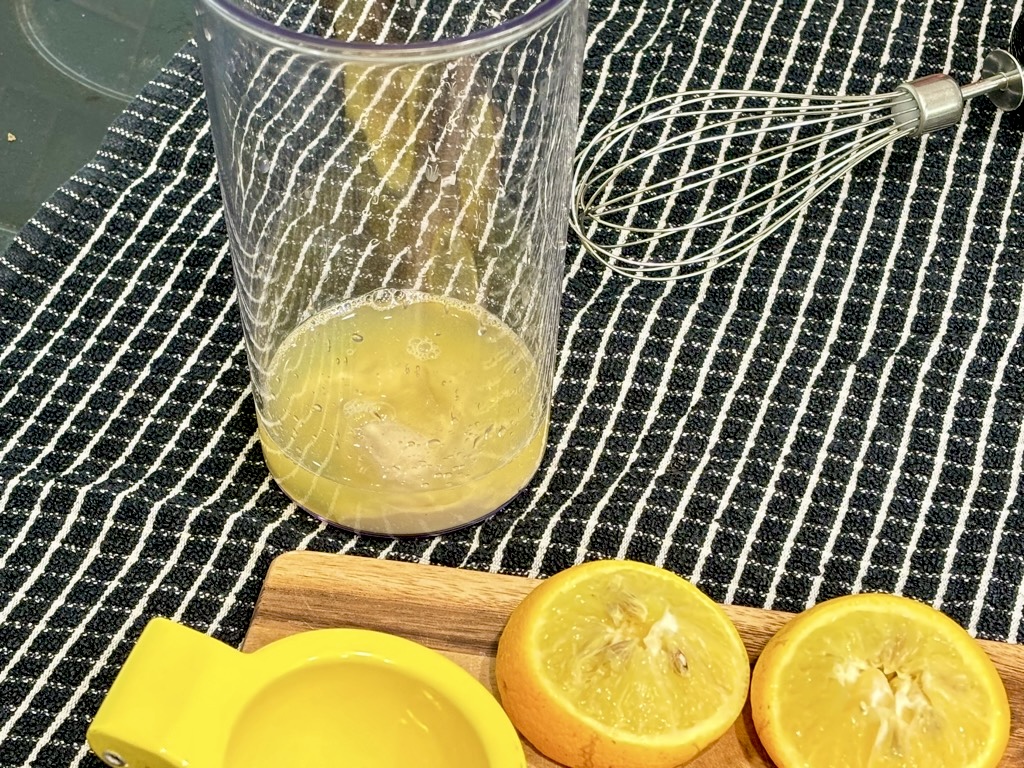
What’s the best dip in the world? Homemade hummus is the best dip in the world. This creamy, dreamy chickpea mix will be your go-to for snacking, sandwiches, and so much more. We’ll blend together chickpeas, tahini, fresh lemon juice, and a touch of garlic to create a perfectly balanced hummus that’s light yet satisfying. The best part? It takes just a few minutes and a handful of ingredients to whip up a batch. You can add different flavours Like a hint of rosemary, or drizzle it with a thin layer of olive oil and kosher salt. It’s the ultimate recipe for anyone who loves a quick, healthy, and delicious snack.
I’m a snacker at heart, always reaching for something to nibble on throughout the day. Crackers, veggies, crunchy fruit — if it can be dipped and has great flavour, it’s on my radar. My love for hummus comes from its versatility and how it transforms the simplest ingredients into something truly special. Smooth, creamy, and packed with flavour, it’s a dip that never disappoints and is always welcome at my table.
I’ve tried countless store-bought hummus brands, but nothing compares to the freshness of this homemade batch. The beauty of making food yourself is that you control everything. Texture, the seasoning, even the extras like roasted red peppers or sun-dried tomatoes. Most importantly, it can be all quality ingredients!
Organic products can be difficult to find in grocery stores, especially those with great flavour. Online orders are available where I live, but I simply don‘t trust that the organic food I order arrives in one piece. Also, if the drivers take extra time to deliver, foods can easily spoil in Australia‘s midday heat. A couple hours left unattended make a huge difference to the quality of products you ordered. With this in mind, I decided to go the traditional way and make my own smooth hummus myself. Healthy food with great flavour. Exactly what I want for my delicious hummus.
My recent obsession is rice cakes topped with plain hummus and my homemade sauerkraut. It’s quickly become our weekday snack staple. Whether you’re hosting a party, packing lunch, or just looking for a healthy snack, my organic hummus recipe is a foolproof option that’s sure to delight. Try it out and let me know what you think!
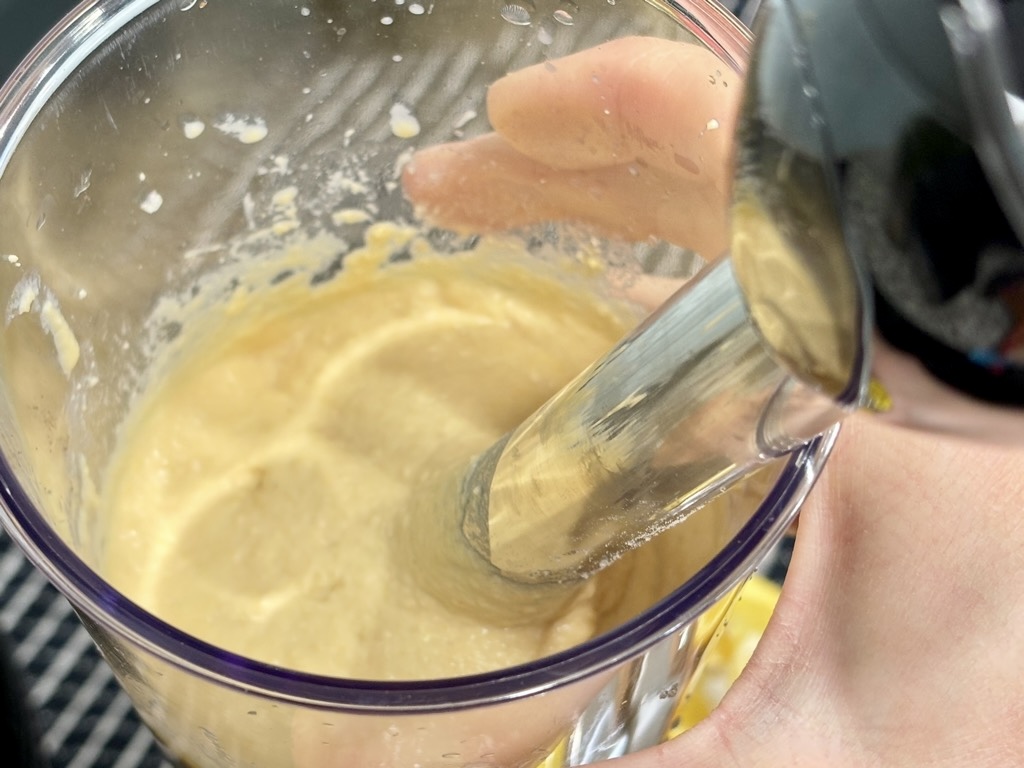
Ingredients for organic hummus made with olive oil
Organic chickpeas, the key ingredient. I must admit, I’m taking the lazy way out here and am using canned chickpeas. The canned chickpeas I get at my local store are not only organic, but also free from additives and unwanted flavours. It’s literally just chickpeas and water in a can, ready to go. I often make my organic hummus recipe without planning for it. So for me, it just makes sense for me to opt for a ready-to-go product. This is of course considering my personal circumstance. If you prefer to soak your chickpeas yourself, there is absolutely no reason for you not to. If I remember correctly, dried chickpeas will however need boiling before use.
Organic tahini – Tahini paste is made from sesame seeds and will help make creamy hummus. It’s what gives hummus its great flavour and is therefore one of the key ingredients. Be careful not to overdo the tahini, as it can overpower your other flavours quite quickly. My recipe calls for a quarter cup of tahini, but if you’re not too sure about it, start with a little less and work your way up.
Organic lemon juice – Thankfully, I live in a place where citrus fruit thrives. Having access to fresh, juicy, untreated lemons is something I will always be grateful for. Whether your lemons are certified organic or simply sourced from a trusted neighbour’s backyard tree doesn’t matter. The organic certification is often too expensive for smaller farmers, but this doesn’t mean their produce is any worse. Next time you’re at your local farmers markets, have a chat with the people selling and find out if they treat their produce with any pesticides. You’ll likely find yourself having much more access to “organic” produce than you initially thought.
Organic extra virgin olive oil, often found in your local supermarket.
Organic garlic. We only need a little bit, so even the smallest organic bulb will suffice. If you don‘t have fresh garlic, garlic powder will also work.
Garam Masala. Ideally organic, but just use whatever you have access to. You can also use ground cumin instead.
Salt – sea salt preferred
Cold water
Optional: Paprika, lemon zest or other herbs and spices to garnish
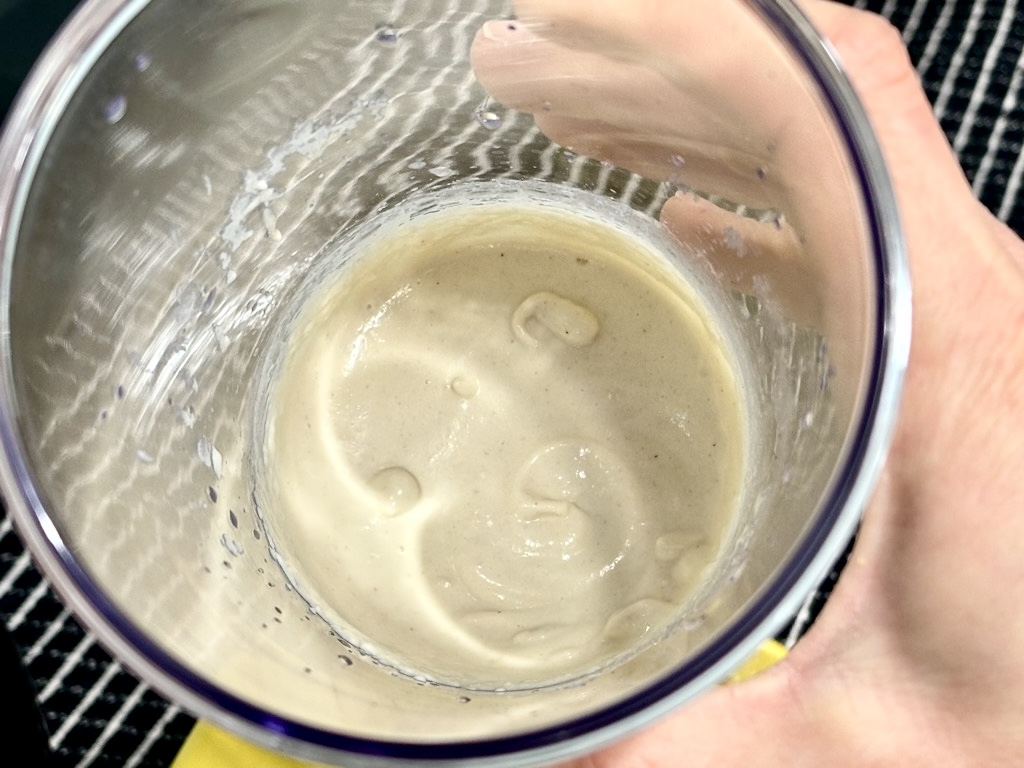
Tips to make this vegan hummus extra creamy
Whisk the tahini and lemon juice before adding any of the other ingredients. The tahini and lemon juice can be combined to a light, fluffy cream the same way you whisk an egg or cream. This will set your organic hummus recipe up for success. Instead of using a food processor, I like to use an actual whisk and the bowl of a food processor for it. My one is electric, but feel free to use a hand held one instead. It might just take a little longer to bring the two together.
Make sure to give your blender enough space to process the chickpea skins. If you are using a narrow, tall container, add the chickpeas bit by bit and blend in-between for the best hummus. This will help to incorporate the ingredients without clogging up your blender and will make your homemade hummus just as creamy as the store bought one.
Focus on simple ingredients. Unlike many hummus recipes that rely on additives or oils for extra creaminess and different flavours, this version is entirely plant-based, featuring only the essentials like chickpeas, tahini, garlic, and lemon juice. By focusing on minimally processed ingredients, such as chickpeas, tahini, and fresh lemon juice, whole food hummus delivers a rich source of plant-based protein, fiber, and healthy fats. These nutrients help support heart health, digestion, and sustained energy levels, especially for those following a vegan or vegetarian diet, other special diets, or simply preferring vegan foods.
Use a high-power blender. Using a blender to make this hummus is essential for achieving the silky-smooth texture that many people love in their dip. A good hummus blender ensures that the chickpeas break down fully, blending seamlessly with the tahini, garlic, and lemon juice, which can be harder to achieve by hand. Additionally, making whole food hummus in a blender preserves the integrity of the ingredients, allowing you to enjoy the full nutritional benefits of the chickpeas and tahini, while creating a velvety texture.
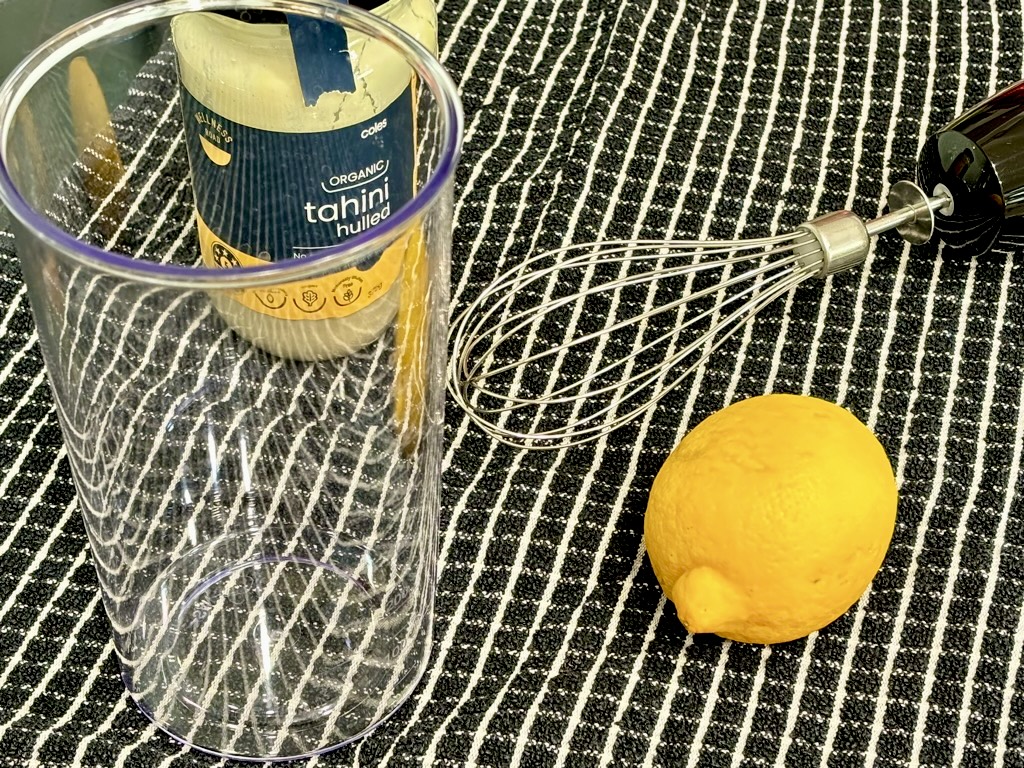
How to make my organic hummus made with olive oil recipe
Organic hummus made with olive oil is super quick to make and will last in the fridge for the better part of a week. Plenty of time to get your snack game on! Start by draining and rinsing the chickpeas, or soaking and boiling them if you choose to start with dried ones instead.
Take a mixing bowl and add the lemon juice and tahini. Using a mixer or handheld whisk, whip the tahini and lemon into a light, airy cream. This will help your hummus become light and fluffy. I find a tall, narrow bowl to work best, as it prevents the splattering that can occur at such small amounts. A stand blender can work as well, but it may require a lot of scraping the sides due to the small quantities.
Once the tahini cream is ready, swap the whisk for a stick blender. If you are already using a big stand mixer, keep everything as is.
Give the chickpeas a rinse and add them to the blender. Add your remaining ingredients also, starting with only a little water. Blend everything for about 2 minutes or until creamy. If you find your hummus not coming together or seeming quite chunky, add a little more water as you go, one teaspoon at a time.
Lastly, taste test, season with salt as needed and garnish with your favourite additions. I often keep my hummus as is, but a sprinkle of paprika or some freshly chopped herbs can go a long way.
Serve immediately or keep in an airtight container in the fridge for up to 5 days.
Other recipes to try
Frequently asked questions
Why do they put olive oil on hummus?
Traditionally, people drizzle olive oil on hummus not only for flavour but also for texture. A good quality extra virgin olive oil adds a rich, slightly fruity taste that complements the nuttiness of the tahini and chickpeas, creating a deeper, more robust flavour. It also makes each mouthful feel extra smooth. In traditional Middle Eastern cuisine, olive oil also plays a role in making the dish visually appealing and helps preserve the freshness of the hummus when stored.
What oils to avoid in hummus?
When making whole food hummus, it’s best to avoid highly processed oils like canola, vegetable, or corn oil. These oils tend to be highly refined and can detract from the natural, wholesome flavors of the ingredients. They may also contain unhealthy fats that defeat the purpose of following a wholesome, healthy recipe. Using lower-quality oils can result in a greasy or heavy texture. This can overpower the creamy, light nature of the hummus. Stick with high-quality oils like extra virgin olive oil if you choose to use oil at all.
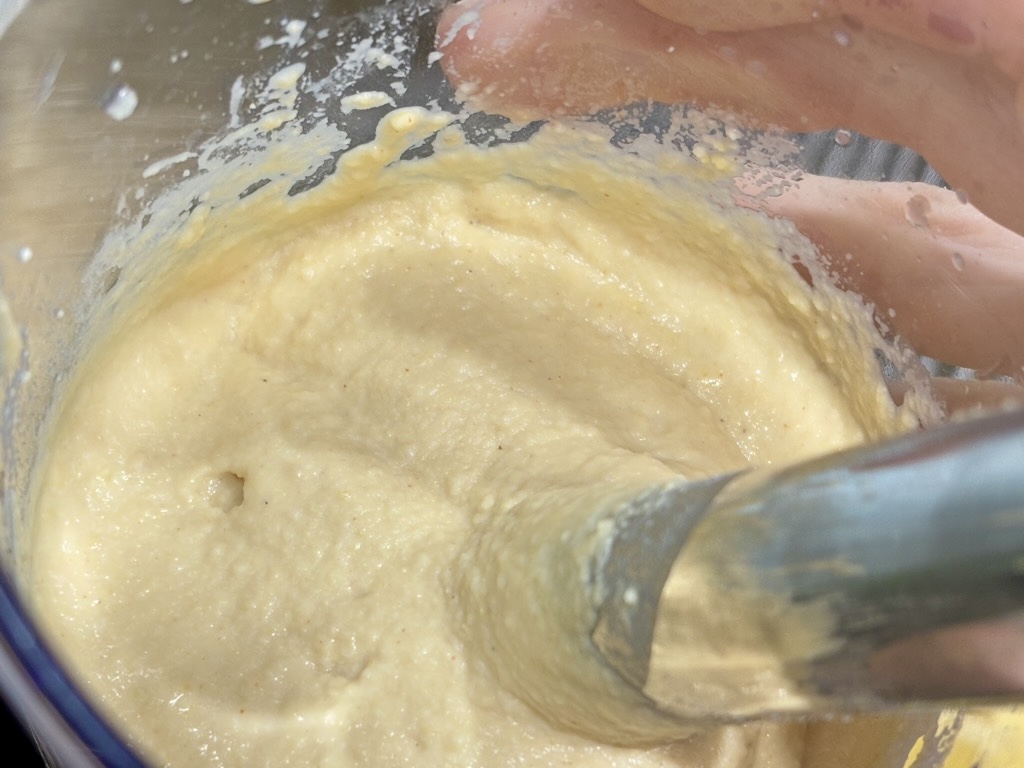
When should you not eat hummus?
You should avoid eating hummus if it has been left out at room temperature for an extended period of time or if it shows signs of spoilage. Examples are an off smell, unusual taste, or mold. Additionally, if you’re sensitive or allergic to any of the ingredients like tahini (made from sesame seeds) or chickpeas, it’s best to avoid consuming it. Some people with gastrointestinal sensitivities may also find hummus made from chickpeas difficult to digest. In these cases, either limit consumption or try variations that reduce certain problematic ingredients, such as garlic or lemon, which can sometimes trigger discomfort.
Why do I feel bad after eating hummus?
Feeling bad after eating hummus could have a few reasons. Chickpeas, the primary ingredient in vegan hummus, are high in fiber, which can cause gas or bloating. This often happens when your body isn’t used to digesting large amounts of legumes. Some people may also be sensitive to ingredients like garlic or tahini, which could lead to discomfort after eating. I know for myself, some days are better than others. The only way to address it is to listen to your body and act accordingly. If you often feel unwell after eating hummus, you may want to experiment with different variations. You can start by reducing the garlic or using a powerful blender to achieve a smoother, more easily digestible consistency.
Is hummus good for the gut?
Yes, hummus can be great for gut health when made from whole, plant-based ingredients. Chickpeas, the main ingredient in whole food hummus, are rich in fiber, and support healthy digestion. Fiber also helps maintain regular bowel movements. Additionally, the healthy fats found in tahini and optional olive oil support gut health by assisting in the absorption of fat-soluble vitamins. For those with sensitive tummies, using a high-power hummus blender to create an extra-smooth consistency may help make it easier to digest while still enjoying its gut-friendly benefits.
What nuts go well with hummus?
While traditional hummus doesn’t typically contain nuts, certain types can be added or paired with hummus to create a delightful flavour combination. Toasted pine nuts are often used as a topping, adding a crunchy texture and a slightly sweet, buttery taste that complements the creaminess of vegan hummus. Walnuts and almonds also pair well, offering a rich, earthy flavor that enhances the nuttiness of the tahini. For a bit of sweetness, cashews can be blended into the hummus, resulting in an ultra-smooth, creamy dip. When incorporating nuts, you can either blend them directly in the hummus or sprinkle them on top as a garnish for added crunch. My personal favourite are crushed pistachios. Not only are they delicious, but also add a beautiful colour contrast to the otherwise plain-looking hummus.
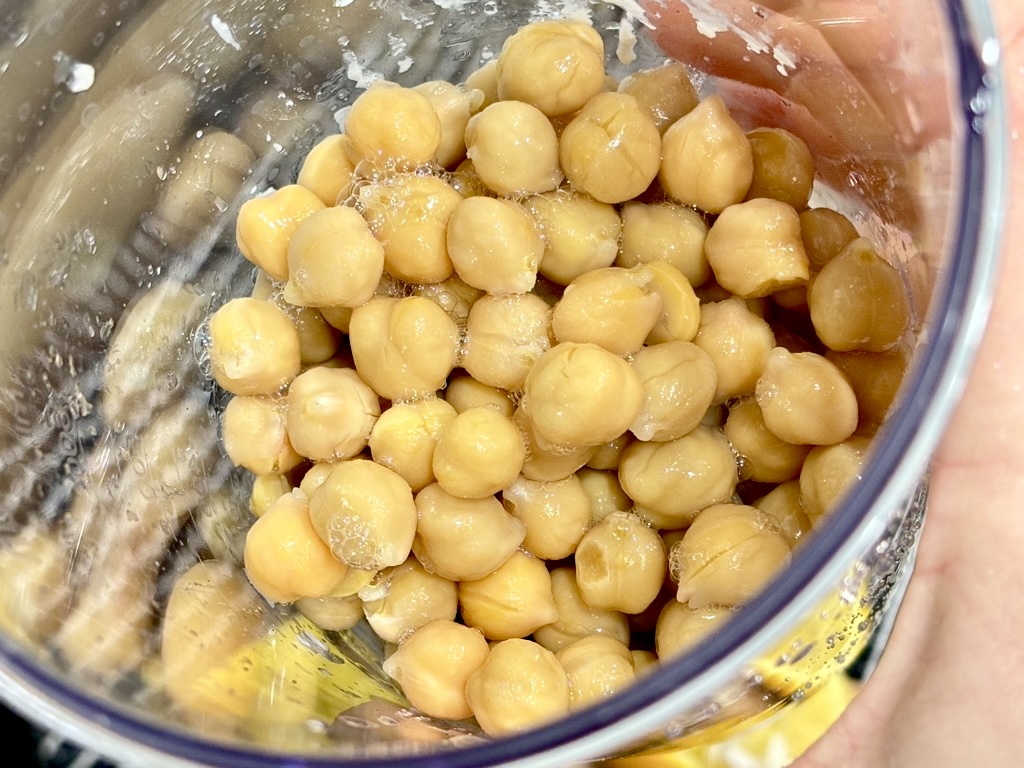
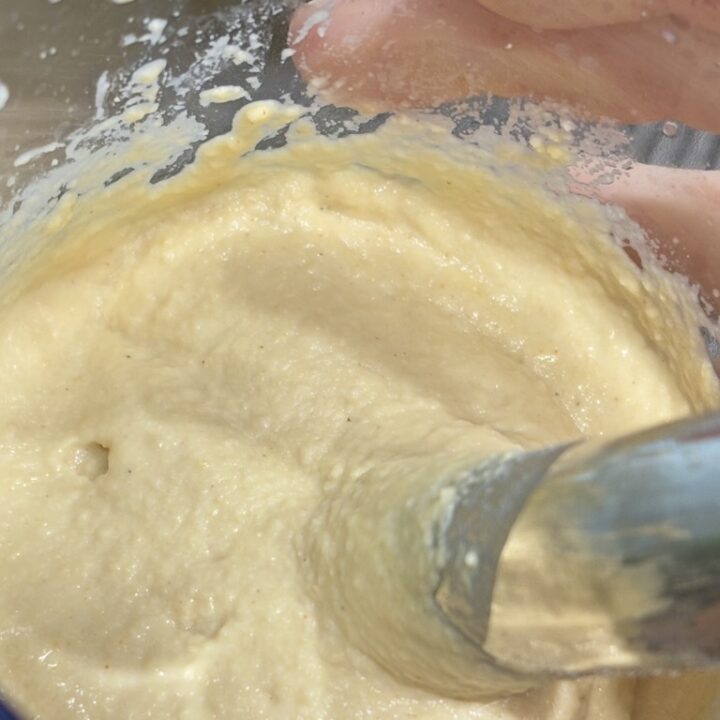
Organic hummus made with olive oil
Creamy, smooth, and bursting with rich, nutty flavours, this recipe is perfect for dipping, spreading, or even as a base for other dishes.
Ingredients
- 1 400g can organic chickpeas
- Juice of 1 large organic lemon (about 1/4 cup)
- 1/4 cup organic tahini
- 1 small organic garlic clove, minced
- 30ml organic extra virgin olive oil
- 1/2 teaspoon ground Garam Masala
- 40ml water
- Salt to taste
- Optional: Ground paprik, chopped nuts or fresh herbs to garnish
Instructions
- Organic hummus made with olive oil is super quick to make and will last in the fridge for the better part of a week. Plenty of time to get your snack game on! Start by draining and rinsing the chickpeas, or soaking and boiling them if you choose to start with dried ones instead.
- Take a mixing bowl and add the lemon juice and tahini. Using a mixer or handheld whisk, whip the tahini and lemon into a light, airy cream. This will help your hummus become light and fluffy. I find a tall, narrow bowl to work best, as it prevents the splattering that can occur at such small amounts. A stand blender can work as well, but it may require a lot of scraping the sides due to the small quantities.
- Once the tahini cream is ready, swap the whisk for a stick blender. If you are already using a big stand mixer, keep everything as is.
- Give the chickpeas a rinse and add them to the blender. Add your remaining ingredients also, starting with only a little water. Blend everything for about 2 minutes or until creamy. If you find your hummus not coming together or seeming quite chunky, add a little more water as you go, one teaspoon at a time.
- Lastly, taste test, season with salt as needed and garnish with your favourite additions. I often keep my hummus as is, but a sprinkle of paprika or some freshly chopped herbs can go a long way.
- Serve immediately or keep in an airtight container in the fridge for up to 5 days.
Notes
- Whisk the tahini and lemon juice before adding any of the other ingredients. Just like you would whisk an egg or cream, the tahini and lemon juice can be combined to a light, fluffy cream. This will set your organic hummus recipe up for success. Instead of using a food processor, I like to use an actual whisk for it. My one is electric, but feel free to use a hand held one instead. It might just take a little longer to bring the two together.
- Make sure to give your blender enough space to process the chickpeas. If you are using a narrow, tall container, add the chickpeas bit by bit and blend in-between. This will help to incorporate the ingredients without clogging up your blender and will make your homemade hummus just as creamy as the store bought one.
- Focus on simple ingredients. Unlike many hummus recipes that rely on additives or oils for extra creaminess, this version is entirely plant-based, featuring only the essentials like chickpeas, tahini, garlic, and lemon juice. By focusing on minimally processed ingredients, such as chickpeas, tahini, and fresh lemon juice, whole food hummus delivers a rich source of plant-based protein, fiber, and healthy fats. These nutrients help support heart health, digestion, and sustained energy levels, especially for those following a vegan or vegetarian diet.
- Use a high-power blender. Using a blender to make this hummus is essential for achieving the silky-smooth texture that many people love in their dip. A good hummus blender ensures that the chickpeas break down fully, blending seamlessly with the tahini, garlic, and lemon juice, which can be harder to achieve by hand. Additionally, making whole food hummus in a blender preserves the integrity of the ingredients, allowing you to enjoy the full nutritional benefits of the chickpeas and tahini, while creating a velvety texture.
